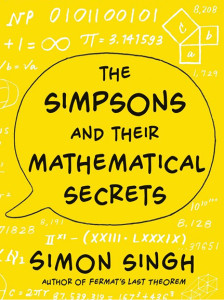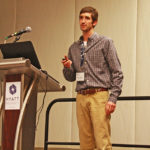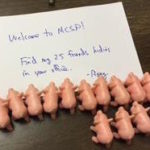One of the reasons to keep exploring new ideas in mathematics is the frequency with which stars align and one of these ideas turns out to be central to the operation of the universe. That overstates the case, of course, but we all know that deep feeling when something that you just discovered starts appearing everywhere, like you have just tapped into a fundamental truth of the cosmos.
A recent occurrence of this starts with a delightful book I’ve been browsing called The Simpsons and Their Mathematical Secrets by Simon Singh. A couple of weeks ago, I finished the next-to-the-last chapter, which talks about various sly insertions of mathematics into Futurama (in turns out that many of the writers of both The Simpsons and Futurama have advanced mathematics degrees). I mentioned this in a conversation with a colleague, who immediately started telling me about a great episode of Futurama (“The Prisoner of Benda”) involving mind-swapping. Here is the problem.
There is a machine that can be hooked up to two bodies at a time, and will swap minds (mind A goes into body B and vice versa). However, the machine can only work on a given pair of bodies once. There is no way to directly undo a swap. If various people have used the machine, possibly multiple times, is it possible to return all minds to their original bodies?
After hearing about this neat problem, and the funny way it’s solved in Futurama, it was a pleasure to find that the last chapter in The Simpsons and Their Mathematical Secrets is about this episode. According to Singh’s book, when the episode was in development, the answer was unknown and writer Ken Keeler had to work out the solution (Keeler, by the way, is also credited with naming the multi-movie cinema of the future the Aleph-null-plex). Keeler’s Theorem, as it is now called, states that any set of mindswaps can be undone if two “unused” people are present. In the episode, the two extra people are Globetrotter University physics professors Sweet Clyde Dixon and Bubblegum Tate, who write a proof of the theorem on a handy chalkboard.
Can you figure out an algorithm for applying Keeler’s Theorem?
Near the end of the chapter on Keeler’s Theorem, the book mentions that an article would appear in a future American Mathematical Monthly. Two days after reading this, and before I could search through my past Monthly journals, the new February Monthly arrived in the mail. Article number 4 is – wait for it – “Keeler’s Theorem and Products of Distinct Transpositions.”
Mathematics is more diverse (and fun!) than most people think.










